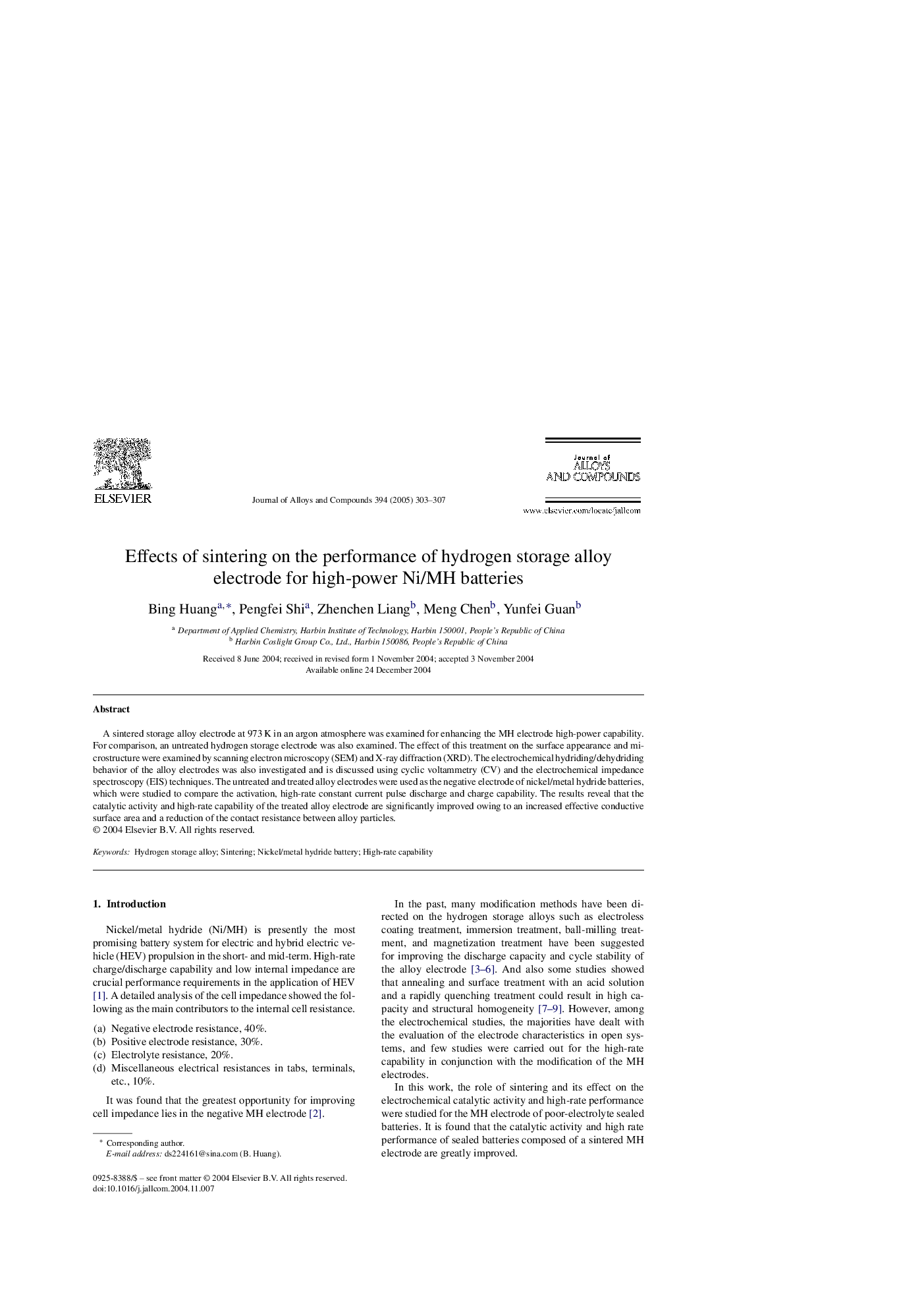| Article ID | Journal | Published Year | Pages | File Type |
|---|---|---|---|---|
| 9803828 | Journal of Alloys and Compounds | 2005 | 5 Pages |
Abstract
A sintered storage alloy electrode at 973Â K in an argon atmosphere was examined for enhancing the MH electrode high-power capability. For comparison, an untreated hydrogen storage electrode was also examined. The effect of this treatment on the surface appearance and microstructure were examined by scanning electron microscopy (SEM) and X-ray diffraction (XRD). The electrochemical hydriding/dehydriding behavior of the alloy electrodes was also investigated and is discussed using cyclic voltammetry (CV) and the electrochemical impedance spectroscopy (EIS) techniques. The untreated and treated alloy electrodes were used as the negative electrode of nickel/metal hydride batteries, which were studied to compare the activation, high-rate constant current pulse discharge and charge capability. The results reveal that the catalytic activity and high-rate capability of the treated alloy electrode are significantly improved owing to an increased effective conductive surface area and a reduction of the contact resistance between alloy particles.
Related Topics
Physical Sciences and Engineering
Materials Science
Metals and Alloys
Authors
Bing Huang, Pengfei Shi, Zhenchen Liang, Meng Chen, Yunfei Guan,
